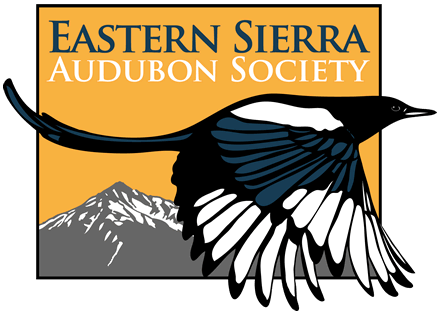Migration varies from spring to fall and from year to year. Spring migration tends to be a period of hyperactivity when birds and birders are in a hurry to get where they are going and do what they do. Fall migration, on the other hand, is a more leisurely paced period where the numbers for a given species are fewer per day than in spring and the length of time from the first southbound migrants to the last is two to three times as long as in spring. That said, no fall is like another and this year proved that again. Many Inyo County birders felt that this fall migration was slower than most falls and that numbers and diversity of species was low. However, there were a few spectacular exceptions, as is usually the case.
The first spectacular exception was on 24 Sep when Gary Rosenberg and Scott Terrill found a LOUISIANA WATERTHRUSH at Panamint Springs, only the second ever recorded in the county. About a dozen birders were able to see it and it remained at least until the next day. The first county record was 7 Aug 1985 at Deep Springs College when Jon Dunn found it while leading a bird tour there. This recent bird is only the 8th record for the state with 4 in spring from early May to early Jun, 3 in fall from early Aug to mid Sep and 1 in winter from early Feb to late Mar. These dates almost completely overlap the dates that Northern Waterthrushes have occurred in Inyo so extreme care and attention should be paid to all waterthrushes.
The second spectacular exception was in the early evening of 20 Nov when Tom Wurster found a RUFOUS-BACKED ROBIN at Furnace Creek Ranch, only the second ever recorded in the county. This Mexican species has a nice habit of wandering north in late fall with many records existing for Arizona; however, it is very rare in California. The bird remained until at least 27 Nov and attracted birders from all over the state. The first county record was 5 Nov 1983 at Furnace Creek Ranch when one was found by Richard Webster. There is a 3rd record for Death Valley National Park at Saratoga Springs, just south into San Bernardino County, on 19 Nov 1974 when it was found by Bob Hudson of Independence and Merle Archie. This recent bird is the 9th record for the state with the window of opportunity from early Nov to mid Apr.
The third spectacular exception was on the morning of 21 Nov. Three observers were oohing and aahing over the Rufous-backed when Robin Tom Wurster called out, BAY-BREASTED WARBLER! Imagine having to stop looking and photographing a very rare robin to check out another very rare bird! This species was formerly much more common in California but this is the first reported in Inyo since 1982. The species breeds in the spruce forests of Canada and when the spruce budworm population crashed so did the Bay-breasted Warbler population as did other species that were largely dependent on the budworms.
The last spectacular exception was on 27 Nov when Steve Tucker found a male NORTHERN CARDINAL at China Ranch, near Tecopa. Brian Brown, the owner of China Ranch, said that this bird has been there since June. It appears to be the Arizona race with an extremely long crest, brighter rosy red than the eastern races and no black between the bill and the forehead. The question many are asking…Is this a true vagrant that wandered up from southern Nevada or along the Colorado River where a small population exists or is it an escaped caged bird? Since it has been in the wild at least since Jun normal indicators of a caged life, extreme feather wear and long claws, have long since molted or been worn down. Trying to decide the origin of this bird is a dilemma fit for King Solomon.
Tags: robin, thrush, warbler
